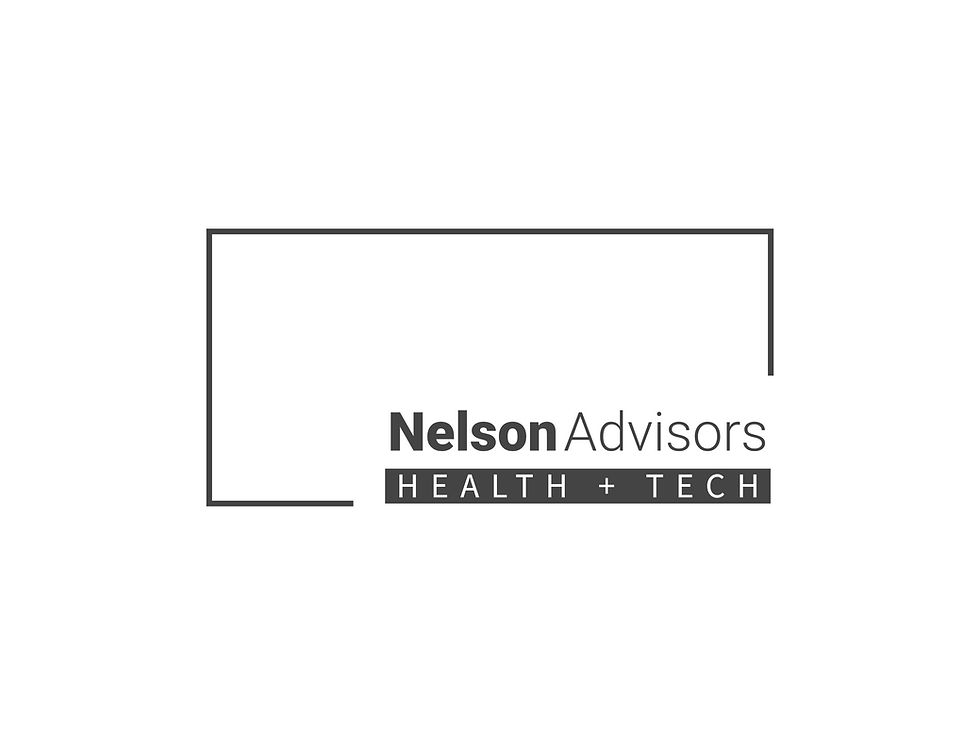Patient Portals 4.0: Future of Patient Engagement
- Lloyd Price
- Nov 28, 2024
- 9 min read

Exec Summary:
Patient portals have evolved significantly over the past decade, transforming from simple information repositories to powerful tools that empower patients to actively participate in their healthcare journey. As we move into the era of Patient Portals 4.0, we can expect even more groundbreaking advancements that will revolutionise patient engagement and healthcare delivery.
Key Features and Benefits of Patient Portals 4.0
Seamless Integration with Wearable Devices and Health Apps:
Real-time data synchronization for comprehensive health insights.
Personalized recommendations based on activity and biometric data.
Timely alerts for potential health risks.
AI-Powered Personalisation:
Tailored content and recommendations based on individual needs and preferences.
Predictive analytics to anticipate future health needs.
Proactive outreach for preventive care and adherence to treatment plans.
Enhanced Communication and Collaboration:
Secure messaging with healthcare providers for efficient and convenient communication.
Virtual consultations and remote monitoring for improved access to care.
Collaborative decision-making tools to involve patients in treatment plans.
Empowered Patient Self-Management:
Educational resources and interactive tools for better understanding of health conditions.
Self-scheduling of appointments and test results.
Symptom trackers and medication reminders for improved adherence.
Data Privacy and Security:
Robust security measures to protect sensitive health information.
Transparent data privacy policies and patient control over data sharing.
Compliance with industry standards and regulations.
Nelson Advisors work with Healthcare Technology Founders, Owners and Investors to assess whether they should 'Build, Buy, Partner or Sell' in order to maximise shareholder value.
Healthcare Technology Thought Leadership from Nelson Advisors – Market Insights, Analysis & Predictions. Visit https://www.healthcare.digital
HealthTech Corporate Development - Buy Side, Sell Side, Growth & Strategy services for Founders, Owners and Investors. Email lloyd@nelsonadvisors.co.uk
HealthTech M&A Newsletter from Nelson Advisors - HealthTech, Health IT, Digital Health Insights and Analysis. Subscribe Today! https://lnkd.in/e5hTp_xb
HealthTech Corporate Development and M&A - Buy Side, Sell Side, Growth & Strategy services for companies in Europe, Middle East and Africa. Visit www.nelsonadvisors.co.uk

The Impact of Patient Portals 4.0 on Healthcare
Improved Patient Engagement and Satisfaction:
Increased patient satisfaction with convenient access to information and services.
Enhanced patient empowerment through active participation in care decisions.
Improved adherence to treatment plans and medication regimens.
Enhanced Care Coordination and Collaboration:
Seamless information sharing between healthcare providers.
Reduced administrative burden and improved efficiency.
Timely interventions and proactive care management.
Better Health Outcomes and Reduced Costs:
Early detection of health issues and timely interventions.
Prevention of complications and hospitalizations.
Reduced healthcare costs through improved efficiency and preventive care.
Challenges and Considerations
Digital Divide: Ensuring equitable access to patient portals for all patients, regardless of socioeconomic status or technological literacy.
Data Privacy and Security: Implementing robust security measures to protect sensitive health information.
Interoperability: Ensuring seamless data exchange between different healthcare systems and devices.
User Experience: Designing intuitive and user-friendly interfaces that cater to diverse patient populations.
Leap Forward
Patient Portals 4.0 represent a significant leap forward in patient engagement and healthcare delivery. By leveraging advanced technologies and innovative approaches, these portals have the potential to transform the patient experience, improve health outcomes, and enhance the overall efficiency of healthcare systems. As we embrace this new era of patient-centred care, it is crucial to address the challenges and ensure that the benefits of these technologies are accessible to all.

What exactly is patient engagement?
Patient engagement refers to the active involvement of patients in their own healthcare. It involves a partnership between patients and healthcare providers, with patients taking an active role in decisions about their care and treatment.
Patient engagement can take many different forms, including:
Education: Providing patients with information about their health condition, treatment options, and self-management strategies can help to empower them to take an active role in their own care.
Communication: Encouraging open communication between patients and healthcare providers can help to build trust and improve the quality of care. This can involve listening to patient concerns, answering questions, and providing feedback.
Shared decision-making: Working with patients to make decisions about their own care, based on their individual preferences and values, can help to improve patient satisfaction and adherence to treatment plans.
Self-management: Providing patients with the tools and resources they need to manage their own health, such as mobile apps or patient portals, can help to improve patient outcomes and reduce the burden on the healthcare system.
Patient-centred care: Focusing on the needs and preferences of the patient, rather than the needs of the healthcare system, can help to improve patient satisfaction and outcomes.
Overall, patient engagement is a key component of high-quality healthcare. It involves empowering patients to take an active role in their own care, and working collaboratively with healthcare providers to make decisions about treatment and management of health conditions.
What is the future of patient portals?
The future of patient portals is likely to involve increased integration with other healthcare technologies, more personalized features, and greater emphasis on patient engagement and communication.
One trend that is likely to continue is the integration of patient portals with electronic health record (EHR) systems. This will allow patients to access their medical records, test results, and other health information more easily, and enable healthcare providers to share information more effectively.
In addition, patient portals are likely to become more personalized and tailored to individual patients' needs. For example, patients may be able to access customized care plans and educational materials based on their health conditions or personal preferences. They may also be able to communicate with their healthcare providers more easily through secure messaging and telemedicine features.
Another trend in patient portals is the use of artificial intelligence (AI) and machine learning (ML) to improve patient care. These technologies can help providers identify patterns in patient data, predict health outcomes, and provide more personalized treatment recommendations.
Finally, patient portals are likely to continue to evolve in response to changing patient needs and preferences. For example, younger patients may prefer mobile apps that allow them to access their health information and communicate with their providers on-the-go, while older patients may prefer more traditional web-based portals.
Overall, the future of patient portals is likely to involve a greater emphasis on patient engagement, more seamless integration with other healthcare technologies, and continued innovation in response to evolving patient needs and preferences.

What are the advantages of hospital patient portals?
Hospital patient portals have several advantages, both for patients and healthcare providers. Here are some of the key benefits:
Improved patient engagement: Patient portals allow patients to access their health information, test results, and medical history from anywhere with an internet connection. This can help patients take a more active role in their own healthcare and improve their overall health outcomes.
Increased efficiency: Patient portals can streamline administrative tasks, such as scheduling appointments, refilling prescriptions, and filling out forms. This can save time for both patients and healthcare providers, and reduce the risk of errors or delays.
Enhanced communication: Patient portals can provide a secure platform for patients to communicate with their healthcare providers. Patients can ask questions, request appointments, and receive updates on their care without having to make phone calls or visit the hospital in person.
Better patient outcomes: Studies have shown that patients who use patient portals are more likely to adhere to their treatment plans, have better chronic disease management, and experience improved health outcomes overall.
Reduced healthcare costs: Patient portals can reduce healthcare costs by minimizing the need for in-person visits and administrative tasks. This can also improve access to care for patients who may have difficulty traveling to the hospital or taking time off work.
Overall, hospital patient portals can improve patient engagement, increase efficiency, enhance communication, improve patient outcomes, and reduce healthcare costs.
What are the disadvantages of hospital patient portals?
While hospital patient portals offer many advantages, there are also some potential disadvantages to consider. Here are a few examples:
Limited access: Some patients may not have access to the internet or may not be comfortable using digital technologies, which could limit their ability to use patient portals effectively.
Security concerns: Patient portals contain sensitive health information, which could be vulnerable to data breaches or unauthorised access. It's important for hospitals to implement strong security measures to protect patient information.
User experience: Patients may find some patient portals difficult to use or navigate, which could discourage them from using the portal or lead to frustration.
Incomplete information: While patient portals can provide patients with access to their health information, there may be gaps in the information available or errors in the data. Patients may need to rely on their healthcare providers to fill in these gaps or correct errors.
Dependence on technology: Patient portals rely on technology, which can sometimes fail or be unavailable. This could limit patients' ability to access their health information or communicate with their healthcare providers.
It's important to note that many of these disadvantages can be mitigated through proper training, education, and implementation of patient portals. Hospitals can also work to address these concerns by listening to patient feedback and continuously improving their patient portal systems.

What are the clinical benefits of patient engagement?
Patient engagement can have several clinical benefits, both for individual patients and the healthcare system as a whole. Here are some examples:
Improved health outcomes: When patients are engaged in their own care, they are more likely to adhere to treatment plans, take medications as prescribed, and make positive lifestyle changes. This can lead to improved health outcomes, such as better management of chronic conditions and reduced risk of complications.
Increased patient satisfaction: When patients feel more involved in their own care, they are more likely to be satisfied with their healthcare experience. This can improve patient loyalty and retention, and lead to better patient-provider relationships.
Better communication: Patient engagement can improve communication between patients and healthcare providers, making it easier to share information and make decisions about treatment. This can lead to more effective care and better health outcomes.
Increased patient safety: Patient engagement can help to identify potential safety issues or errors before they become serious problems. Patients who are engaged in their own care are more likely to notice changes in their symptoms or medication side effects, and to report them to their healthcare providers.
More efficient use of healthcare resources: When patients are engaged in their own care, they are less likely to require emergency room visits or hospitalizations. This can reduce the strain on the healthcare system and lead to cost savings for both patients and providers.
Overall, patient engagement can lead to improved health outcomes, increased patient satisfaction, better communication, increased patient safety, and more efficient use of healthcare resources.
What is the future of patient engagement?
The future of patient engagement in the next 5 years is poised for significant transformation, driven by technological advancements, shifting healthcare paradigms, and evolving patient expectations. Here are some key trends shaping this future:
1. Digital Health Revolution:
AI-Powered Personalization: AI will revolutionize patient engagement by enabling highly personalized experiences. Algorithms will analyse individual patient data to tailor interventions, reminders, and educational materials.
Wearable Tech Integration: Wearable devices will seamlessly integrate into healthcare, providing real-time data on vital signs, activity levels, and medication adherence. This data will be used to trigger proactive interventions and personalised care plans.
Virtual and Augmented Reality: Immersive technologies will be used for virtual consultations, patient education, and even therapeutic interventions, making healthcare more accessible and engaging.
2. Patient-Centric Care Models:
Shared Decision-Making: Patients will have a more active role in decision-making processes, empowered by access to information and digital tools.
Proactive Care: Healthcare will shift from reactive to proactive, with a focus on preventive care and early intervention. Patients will be engaged through regular check-ins, remote monitoring, and personalised health plans.
Remote Monitoring and Telehealth: Remote monitoring solutions will enable continuous tracking of patient health metrics, facilitating timely interventions and reducing the need for in-person visits.
3. Data-Driven Insights:
Real-World Data: The increasing availability of real-world data from various sources will provide valuable insights into patient behaviour, treatment effectiveness, and emerging trends.
Predictive Analytics: Advanced analytics will enable prediction of potential health risks, allowing for early intervention and personalised prevention strategies.
Data Privacy and Security: Robust data privacy and security measures will be essential to protect patient information and build trust in digital health solutions.
4. Ethical Considerations and Inclusivity:
Digital Divide: Healthcare providers will need to address the digital divide and ensure equitable access to digital health tools for all patients, regardless of socioeconomic status or technological literacy.
Ethical Use of AI: AI algorithms must be developed and used ethically, avoiding bias and ensuring transparency in decision-making processes.
Patient Consent and Data Ownership: Clear guidelines and regulations will be needed to define patient rights regarding data ownership, access, and sharing.
In conclusion, the future of patient engagement is bright, with the potential to significantly improve health outcomes and patient satisfaction. By embracing these trends and addressing the challenges, healthcare organizations can create a more patient-centered, efficient, and effective healthcare system.
Nelson Advisors work with Healthcare Technology Founders, Owners and Investors to assess whether they should 'Build, Buy, Partner or Sell' in order to maximise shareholder value.
Healthcare Technology Thought Leadership from Nelson Advisors – Market Insights, Analysis & Predictions. Visit https://www.healthcare.digital
HealthTech Corporate Development - Buy Side, Sell Side, Growth & Strategy services for Founders, Owners and Investors. Email lloyd@nelsonadvisors.co.uk
HealthTech M&A Newsletter from Nelson Advisors - HealthTech, Health IT, Digital Health Insights and Analysis. Subscribe Today! https://lnkd.in/e5hTp_xb
HealthTech Corporate Development and M&A - Buy Side, Sell Side, Growth & Strategy services for companies in Europe, Middle East and Africa. Visit www.nelsonadvisors.co.uk


















































Comments